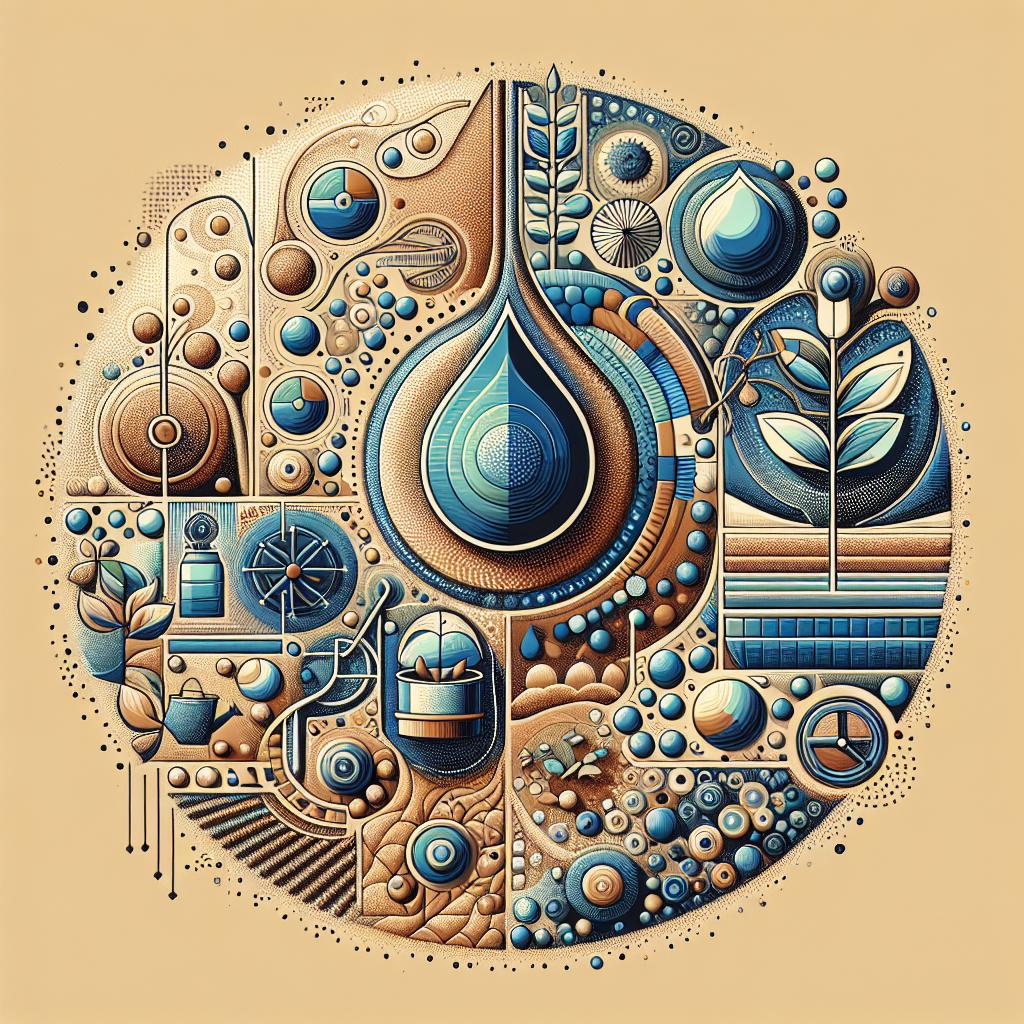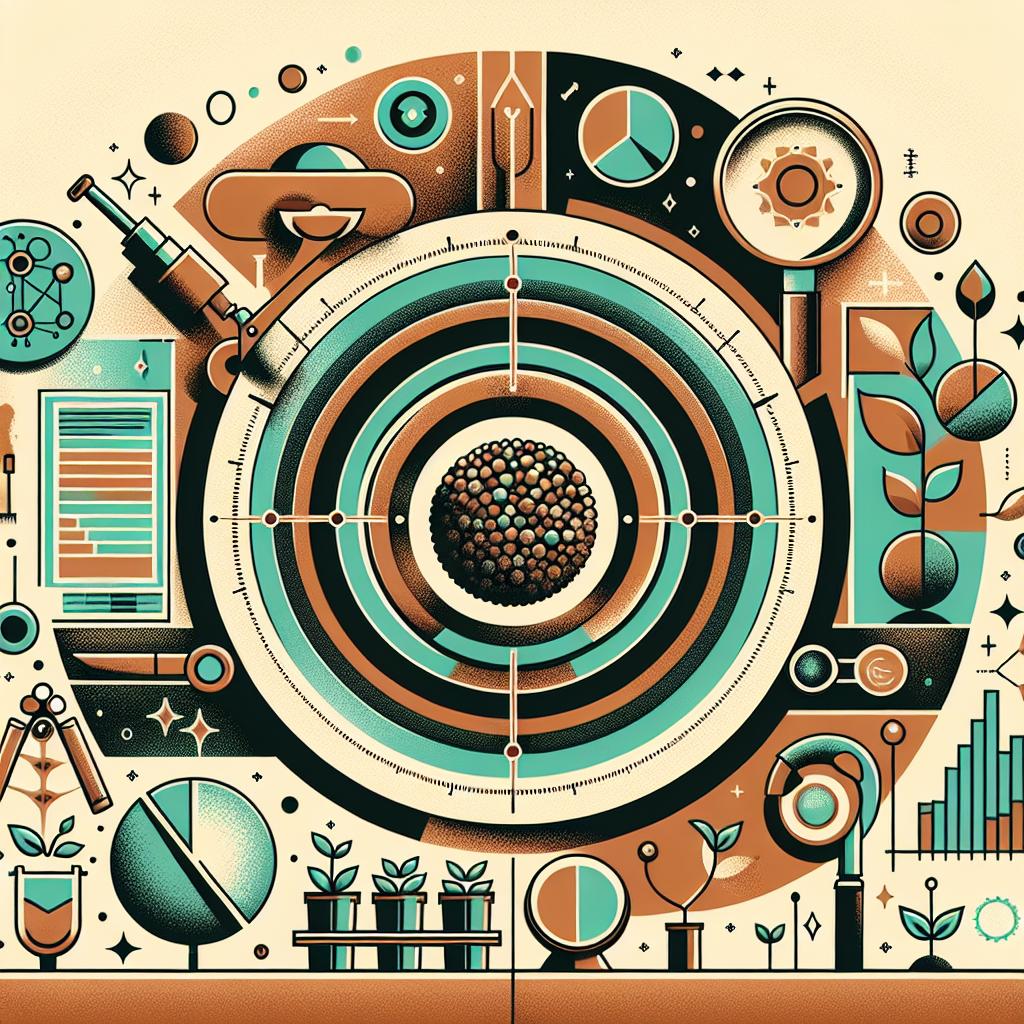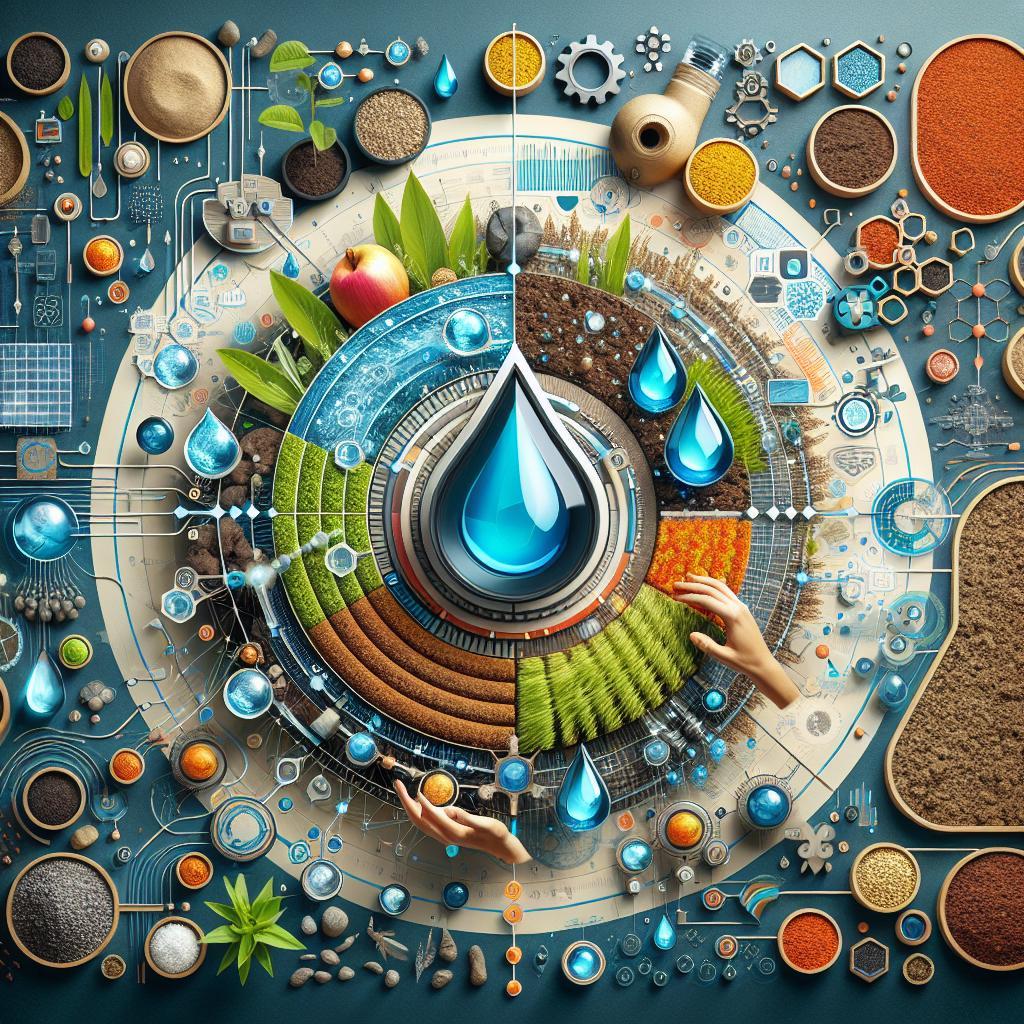This post may contain affiliate links which means I may receive a commission for purchases made through links. Learn more on my Private Policy page.
Introduction: Cultivating Success – A Friendly Guide to Irrigation Water Management for Every Soil Type
Imagine walking through a lush green field, where every plant is thriving, and the air is filled with the sweet scent of flourishing crops. Behind this picturesque scene lies a well-tuned symphony of irrigation water management, harmonizing with the unique characteristics of the soil below. Whether you’re a seasoned farmer or a budding gardener, understanding how to best manage water in various soil types can be the key to unlocking the full potential of your plants.
In this article, we’ll embark on an enlightening journey through the diverse world of soils—from sandy soils that drain quickly to heavy clay that holds on to moisture like a hidden treasure. We’ll explore the best practices designed to not only nourish your plants but also promote sustainability and conserve our precious water resources. With a friendly approach and practical tips, we’ll ensure that you’re equipped to cultivate success, no matter where you dig your roots. Let’s dive in and discover how thoughtful irrigation can transform your garden into an oasis of productivity!
Understanding Soil Types and Their Impact on Water Needs
Soils are not created equal; their distinct characteristics have a significant influence on irrigation practices and water management strategies. Understanding how various soil types interact with water can help cultivators maximize their crop yields while conserving this precious resource. For instance, sandy soils drain quickly, often requiring more frequent irrigation to maintain adequate moisture for plants. In contrast, clay soils, with their fine particles, hold water well but can become compacted, leading to poor drainage and the risk of waterlogging. Here are some key soil types and their water retention capabilities:
- Sandy Soil: High drainage; low water retention.
- Clay Soil: Low drainage; high water retention.
- Loamy Soil: Balanced drainage and retention.
- Silty Soil: Moderate drainage; higher moisture retention than sand.
Incorporating practices tailored to these soil types can enhance irrigation efficiency and ensure optimal plant health. For example, implementing drip irrigation in sandy soils minimizes water loss and targets root zones directly, while ponding methods in clay soils can prevent excess runoff and improve absorption. Additionally, understanding soil pH and nutrient content will help in fine-tuning water needs. The table below summarizes recommended irrigation practices based on soil types:
| Soil Type | Recommended Irrigation Method | Water Needs |
|---|---|---|
| Sandy Soil | Drip Irrigation | Frequent, light applications |
| Clay Soil | Ponding | Less frequent, deeper applications |
| Loamy Soil | Sprinkler Systems | Moderate, balanced approach |
| Silty Soil | Furrow Irrigation | Regular, but not excessive |

Crafting a Tailored Irrigation Strategy for Sandy Soils
When managing irrigation in sandy soils, it’s essential to recognize the unique characteristics that define this soil type. Sandy soils have larger particles that create ample drainage, causing water to flow rapidly through the soil profile. This means that plants may require more frequent watering to maintain their moisture needs. Here are some best practices for creating an effective irrigation strategy:
- Frequent, Shallow Watering: Implement shorter and more frequent watering sessions to ensure water reaches the root zone before it drains away.
- Mulching: Apply organic mulch to help retain soil moisture and regulate temperature.
- Soil Amendments: Utilize water-retaining additives like hydrogel or compost to improve moisture retention within the sandy soil.
- Monitoring Moisture Levels: Utilize soil moisture sensors to determine the optimal watering schedule, preventing over or under-watering.
Additionally, it’s important to consider using tailored irrigation methods specifically suited for sandy conditions. Drip irrigation, for instance, directs water straight to the roots, minimizing evaporation and runoff. Using a scheduling approach based on weather forecasts can also help optimize your water usage. Here’s a simple table to illustrate different irrigation methods and their suitability for sandy soils:
| Irrigation Method | Suitability for Sandy Soils | Benefits |
|---|---|---|
| Drip Irrigation | High | Targeted watering; reduces waste |
| Sprinkler System | Medium | Covers larger areas but can lead to evaporation |
| Soaker Hoses | High | Allows slow, deep watering |

Maximizing Efficiency with Clay Soil Management Techniques
When managing clay soil, which tends to retain moisture but can become compacted, employing specific techniques can significantly enhance irrigation efficiency. Creating raised beds can aid in promoting drainage, providing roots with much-needed oxygen while preventing waterlogging. Additionally, incorporating organic matter, like compost or well-rotted manure, can improve soil structure and permeability, allowing water to infiltrate more effectively. Crop rotation and cover cropping can also contribute to healthier soil biology, reducing compaction and enhancing nutrient cycling, which are crucial for optimal plant growth.
Utilizing efficient irrigation methods is vital in clay soil management. Drip irrigation systems can be beneficial as they deliver water directly to the root zone, minimizing runoff and evaporation. This targeted approach not only conserves water but also reduces the likelihood of pooling that is common in clay. Implementing a scheduled watering routine, aligned with weather forecasts and moisture levels, helps maintain a balance between irrigation and natural rainfall. To visualize the impact of proper irrigation techniques, here’s a concise comparison:
| Technique | Benefits |
|---|---|
| Drip Irrigation | Reduces evaporation and water pooling |
| Raised Beds | Improves drainage and oxygen access |
| Organic Matter Addition | Enhances soil structure and nutrient cycling |

Utilizing Technology for Precision Irrigation Across Various Soils
In the quest for efficient irrigation, technology offers groundbreaking solutions tailored to varying soil types. By leveraging precision irrigation systems, farmers can monitor and manage water distribution according to the specific characteristics of their soil. Systems such as drip irrigation, soil moisture sensors, and automated valves enable real-time adjustments, ensuring that each plant receives the optimal amount of water. Adopting these technologies allows for significant water savings, reduced runoff, and improved crop yields. Imagine walking through fields equipped with drones that assess crop health and identify moisture deficiencies, making it easier to address plant needs without wasting precious resources.
Furthermore, understanding the unique properties of soil types—such as clay, sandy, and loamy soils—can greatly enhance irrigation effectiveness. Each soil type has distinct water retention and drainage qualities that dictate irrigation strategies. For instance, on clay soils, which can retain moisture, it may be beneficial to implement a less frequent irrigation schedule, while sandy soils require more frequent applications due to their quick drainage. Loamy soils, being a combination of both types, offer a balanced approach that can benefit from varying irrigation methods. Below is a simple comparative table showcasing recommended practices based on different soil types:
| Soil Type | Water Retention | Irrigation Frequency |
|---|---|---|
| Clay | High | Less frequent |
| Sandy | Low | More frequent |
| Loamy | Moderate | Balanced |
Concluding Remarks
As we wrap up our exploration of the best practices for irrigation water management tailored to different soil types, remember that effective irrigation is not just about quenching the thirst of your crops; it’s about nurturing a holistic relationship with your land. Each soil type, from sandy to clayey, has its quirks and characteristics, and understanding these can unlock the potential of your garden or farm.
Think of your irrigation strategy as a dance—one where every step counts. By rhythmically adjusting your techniques to match the mood of your soil, you not only conserve precious water but also maximize your yield. So go ahead, experiment with techniques like drip irrigation, rainwater harvesting, and soil moisture monitoring, and see how they harmonize with your unique environment.
As you venture forth with your newfound knowledge, let your passion for sustainable practices guide you. Share your successes and challenges with fellow growers, for in community, we can all learn and grow together. Happy irrigating, and may your fields flourish like never before! 🌱💧
This post may contain affiliate links which means I may receive a commission for purchases made through links. Learn more on my Private Policy page.

